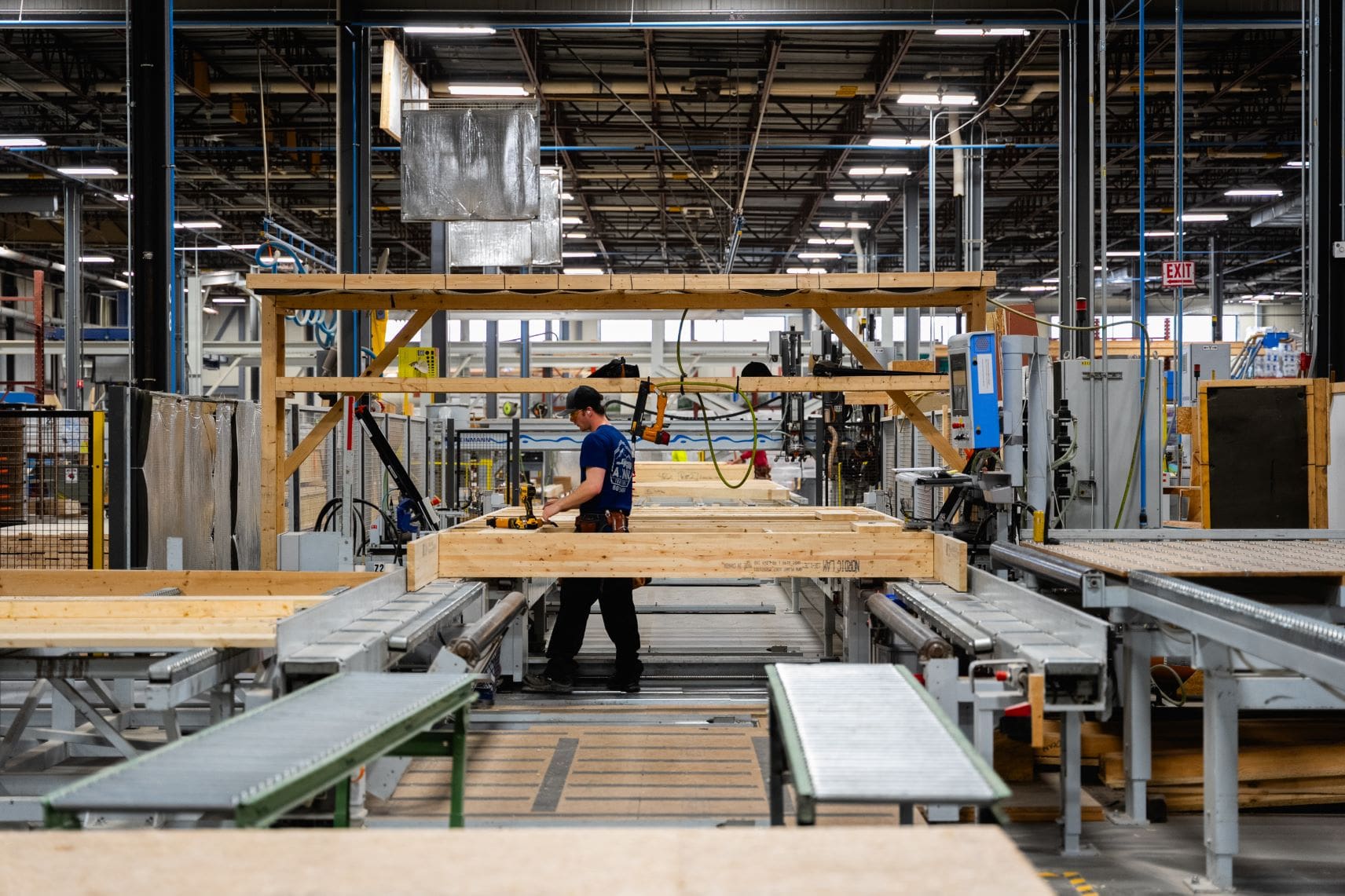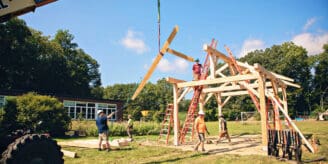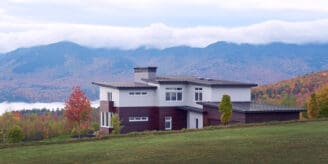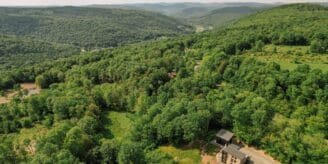At Bensonwood, we combine traditional craftsmanship with cutting-edge technology to create buildings that will serve generations to come. We follow a sustainable approach to building technology, leveraging 3D modeling and CNC fabrication to greatly reduce waste, while improving accuracy and precision. Whether you are building a custom home, an OpenHome, or a Unity Home, our buildings are designed with the future in mind and are built in a way that allows mechanical components to be easily upgraded or replaced as technology advances.
Our buildings are designed in 3D programs before they reach the shop floor in what we call the “Digital Twin”. The 3D model is broken into panels and written to machine files that our CNC machines can read. This leads to as much of an error-free building process as possible, eliminating many of the commonly accepted downfalls of traditional building practices.
We strive to constantly elevate the standard of building, making the process better for everyone involved. With strict quality control procedures in place, each panel has a QC checklist that travels with it through each step of this process, monitoring dozens of parameters.
Initial Lumber Preparation
Regardless of final application, all our panels start in the shop as simple raw lumber. Stored indoors at our facility, the lumber is protected from the elements, ensuring our pieces stay straight and dry. As seen in the photos below, our lumber is abnormally long. This is because we use a manufactured wood product from Nordic. It is created using the heartwood of rapid growing black spruce trees. The smaller selections of wood are fused together to create the highly precise lumber products that go into our buildings.
Lumber being used in an active project is stacked by size and type in a bay accessible by our vacuum equipped robot lift. The robot is fed information on which kinds of wood are needed next, which it uses to automatically select lumber from the bay and move it to our Hundegger Speed Cut machine. The Speed Cut is multifunctional, able to cut, drill, mill, create notches, and more. This allows us to create highly complex angles and connections with relative ease.
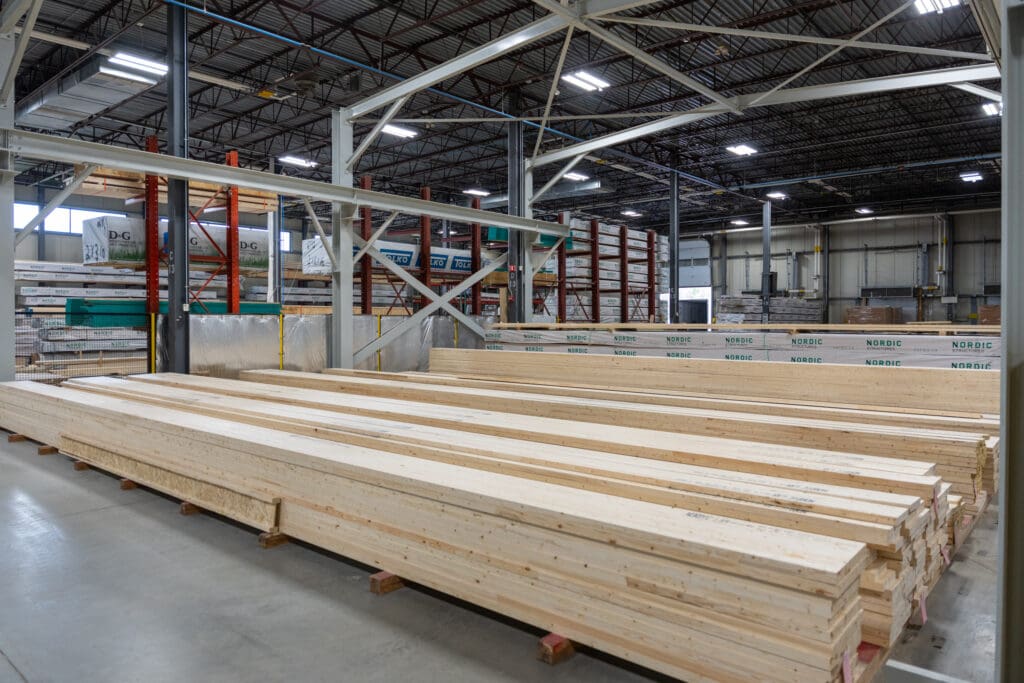
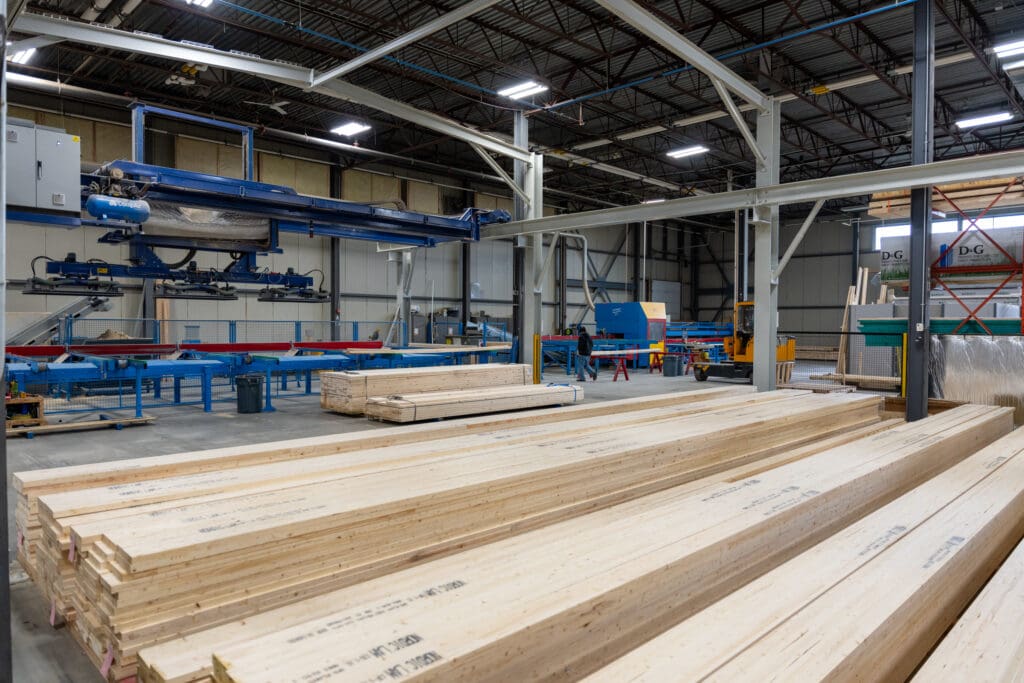
Step 1 – Lumber is Cut and Labeled
The lumber is fed through the Speed Cut machine with information on the exact required dimensions. This information is all created on a computer, in the digital twin. Each home we build is meticulously modeled in 3D, accounting for every piece of wood, screw, and every hole that needs to be drilled. This detailed information is converted into a machine file, which the Speed Cut interfaces with to assess how each piece of wood should be cut.
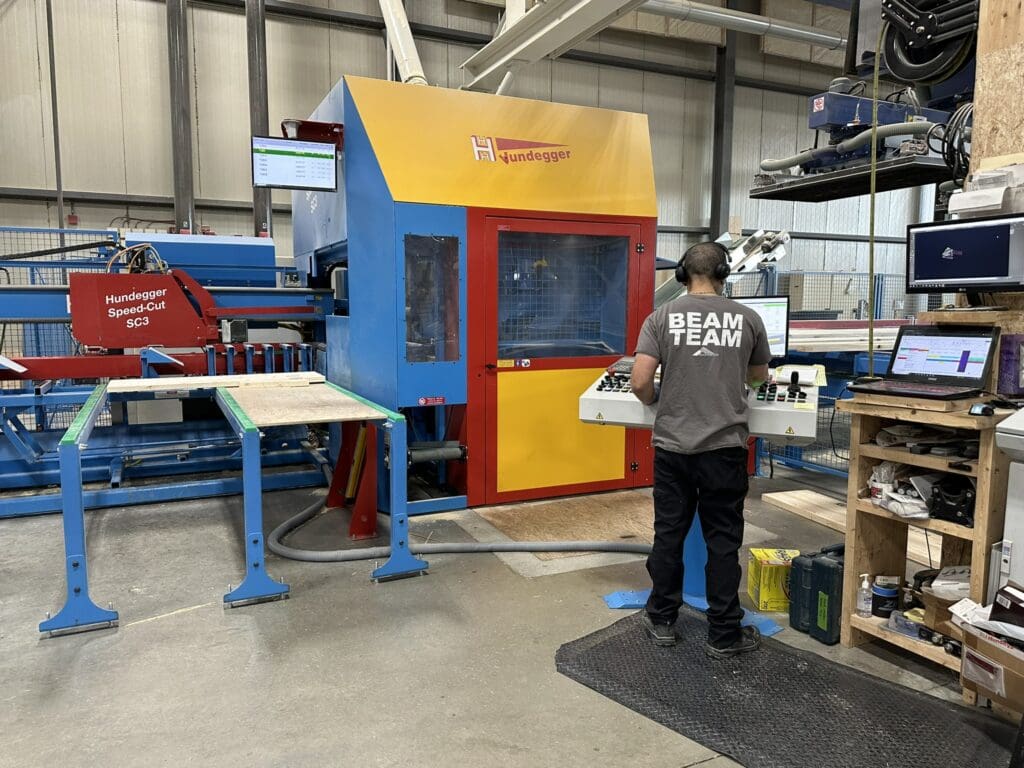
After the lumber is cut, it is automatically labeled with a unique identification number by an ink jet inside the Speed Cut. The labeling allows our building systems employees to easily find where each piece of wood belongs once they begin framing a panel. In addition to the identification markings, the Hundegger will also print layout marks, indicating where connections should be made. After coming out of the cutting machine, each piece is placed in a cart by the operator, on shelves based on which panel it belongs in.
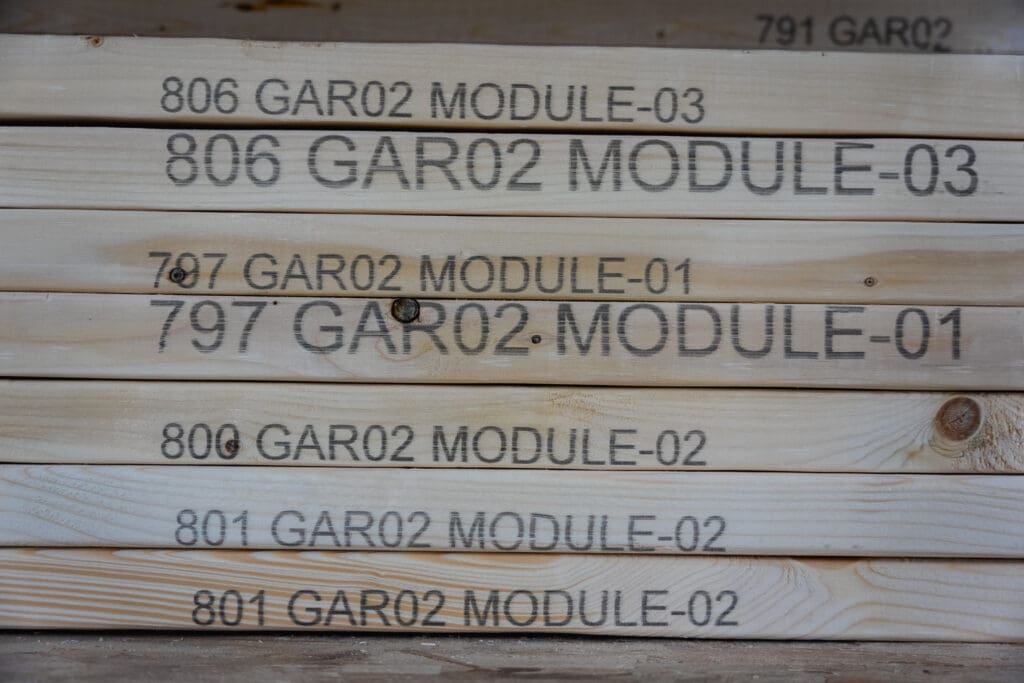

Assembly and Inspection
Step 2 – Panel Framing
The wall panel is then framed by a combination of one of our skilled panel fabricators, and our Weinmann Framing Machine. This process is aided with 3D drawings accessible via an iPad at each station of the production line. Each iPad has a unique drawing available, relating only to the work being done at its respective station. This keeps the process simple for the employees at that station, as they do not need to filter through excess information to find the instructions they are looking for. Our framer will hand build rough opening buildups for windows and doors before the Weinmann frames and extrudes the rest of the panel. A worker will load material into the Weinmann, and then using machine files from our Virtual Fabrication team, the machine will automatically align and space the wall studs to make up a completed panel. It will then automatically nail the top and bottom plates of the panel to the wall studs.
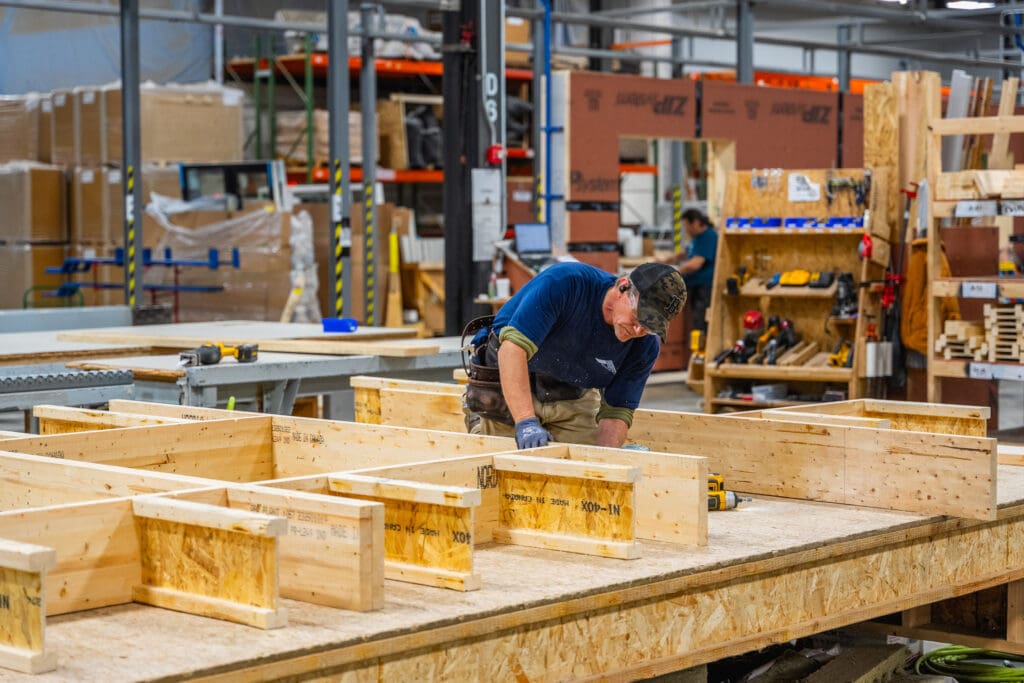

Step 3 – Multifunction Bridge
Once framing is complete, the interior layer of OSB will be laid on top of the panel, and the whole unit will be rolled into our Weinmann Multifunction Bridge. The Weinnman intelligently nails the OSB to the panel at all required connection points, reading from another machine file created by our virtual fabrication team. The connection points are accounted for in the digital model, so the Weinnman will operate as desired. After the machine completes nailing, it will also rout out any rough openings or required penetrations present in the panel.
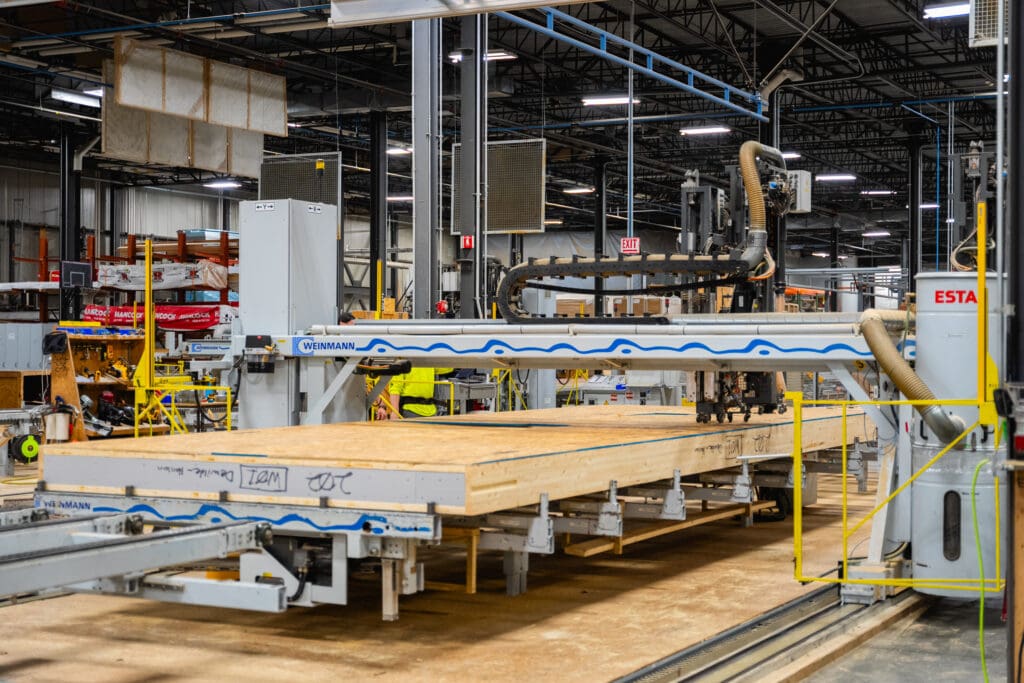
Step 4 – Factory Installed Insulation
After the back of the panel is in place, it will be flipped using another machine called the Butterfly Table. Because our wall panels can weigh up to 1,500 pounds, the use of this machine is imperative to the smooth operation of the production line. Now that the panel is flipped and the open cavity is facing up, it is ready for insulation.
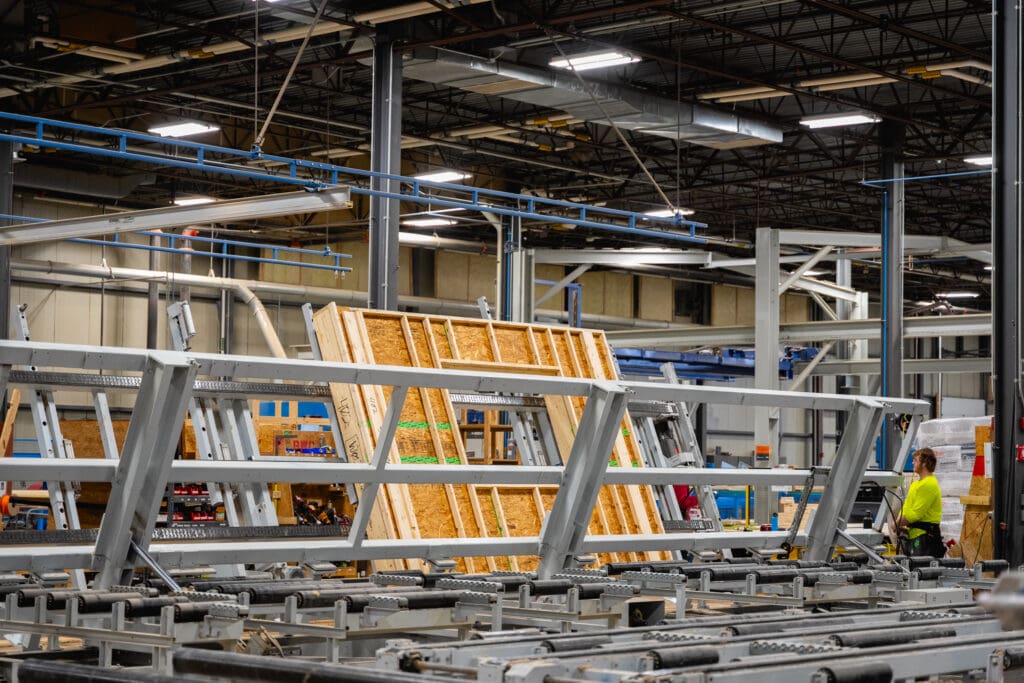
Our panels are insulated with dense pack cellulose, a recycled paper product made of reused cardboard. An Isocell Machine blows cellulose into the panel at a targeted density of 3.8lbs/ft3. This insulation specification is standard across all Bensonwood wall panels. Insulating a panel at the horizontal orientation and at such a high density ensures that the cellulose will not settle over time. We work hard to ensure the correct levels are met. A technician will regularly take a core sample of cellulose and measure its weight to verify density. This reading allows the technician to know whether the machine is operating as desired, or if adjustments are needed.
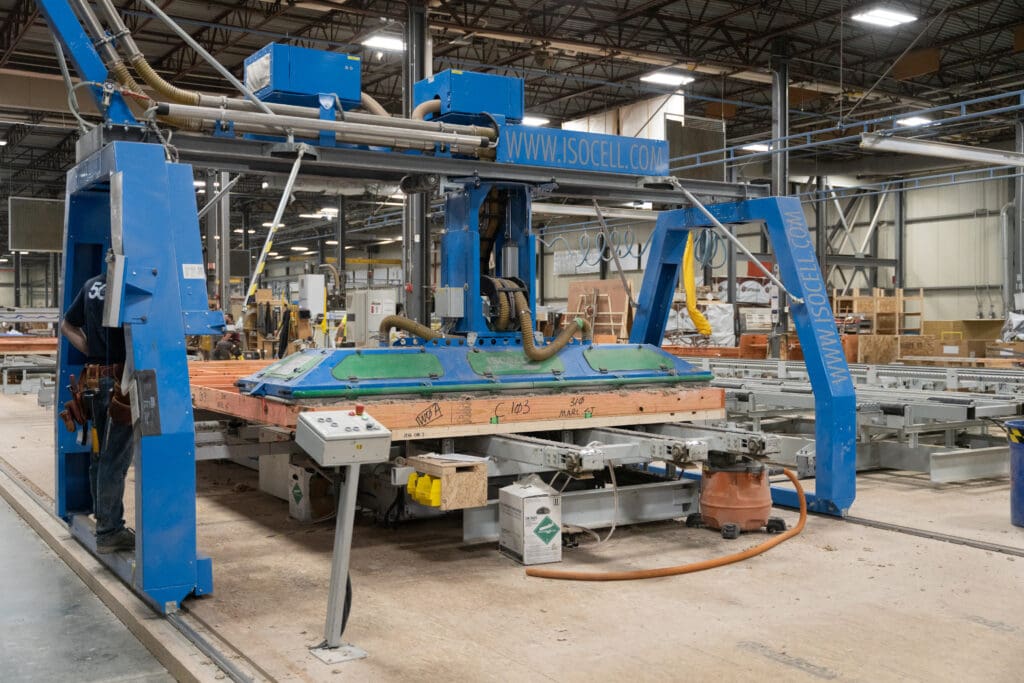

Final Steps and Shipping Preparation
Step 5 – Sealing and Windows
After insulation, the panel will be closed with ZIP System Sheathing and moved to the next station in our production facility. A worker at this station will tape and roll every seam on the panel, making sure there are no leaks or openings. Rolling the tape is an important step of our quality control process, ensuring maximum adhesion and air sealing.
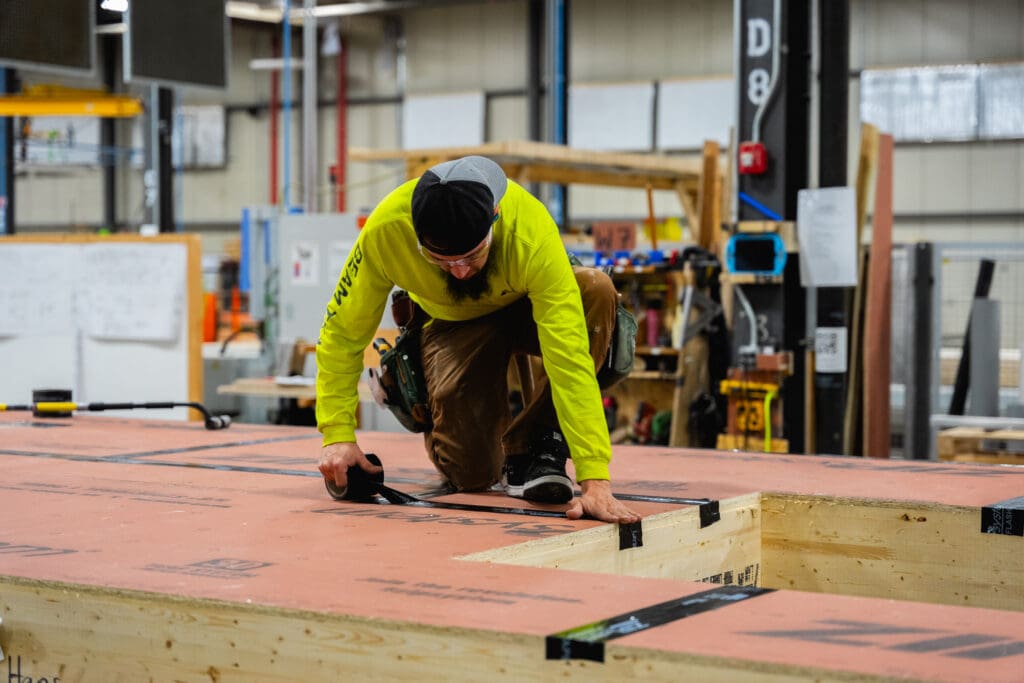
After taping, the panel is transported down the line on automatic rollers to a machine called the upraiser table, which lifts the panel into the vertical position and places it on a track. The panel is now ready for window installation by our expertly trained craftsmen. A major benefit to offsite construction is that windows may be installed without a crane. Even for panels that will ultimately be installed on a second or third floor, the window installation is done at ground level and without the added factors of wind and precipitation to hinder the process.
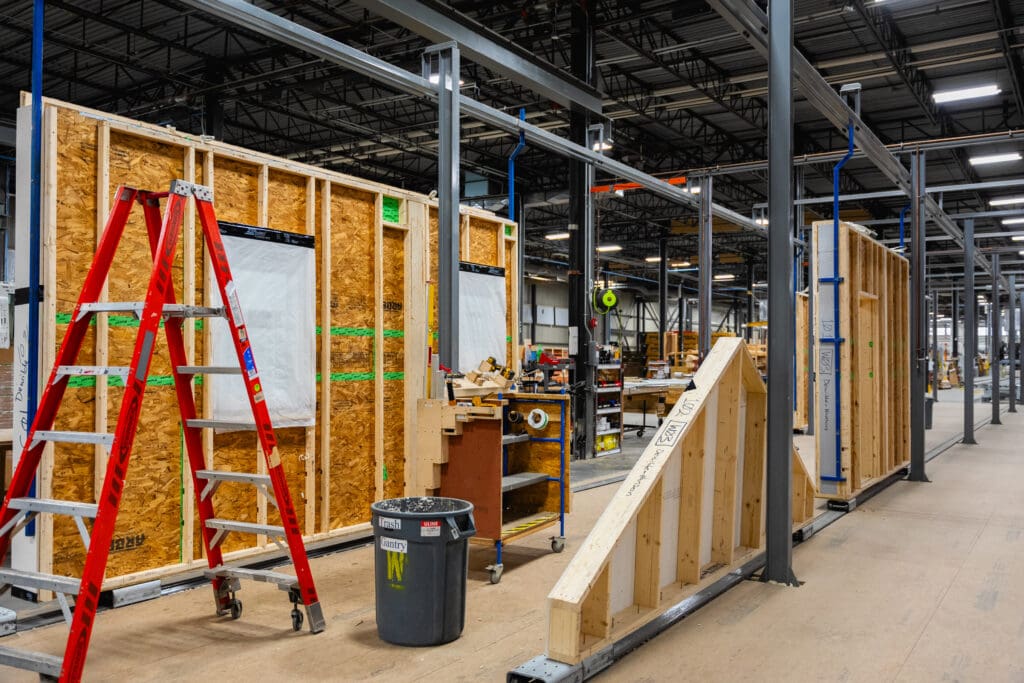
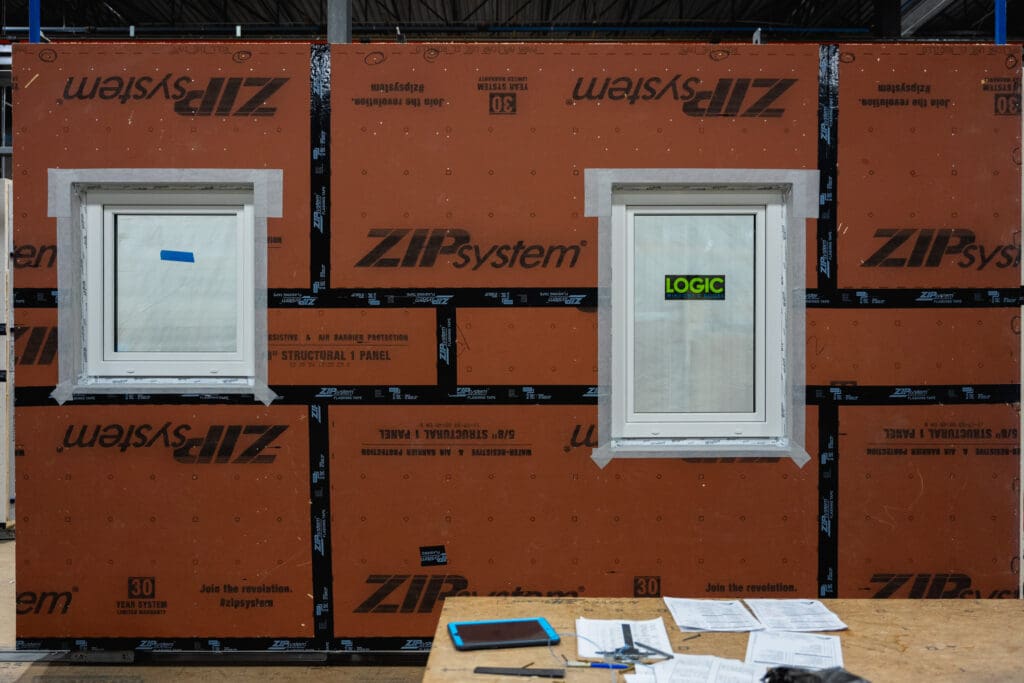
Step 6 – Prep for Shipping
After window installation, the last step for these panels is to be “bundled”. Predetermined sets of panels will be grouped based on the order of construction once on site. Panels are prepped for shipping by boarding up the windows and being strapped together in bundles. The bundles are then wrapped in recycled boat wrap and stored until they are needed on site. After being unpacked, the boat wrap is sent back to our facility to be re-recycled again.
These bundles are sized for road travel so that they will be able to travel under most bridges and will not require a wide load designation. Once onsite, the panels will be unwrapped and are now ready for installation in a Bensonwood or Unity shell.


The construction of our wall panels showcases a seamless blend of craftsmanship and technology. From careful selection and storage of materials, to detailed 3D modeling and automated assembly processes, we ensure each panel is built to the highest quality. Bensonwood strives to set the standard for the future of construction, where efficiency and performance are combined with professional expertise.
We would love to chat with you about your next project. Reach out at the link below to share your ideas or existing plans with a member of our team!
